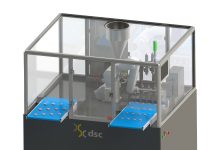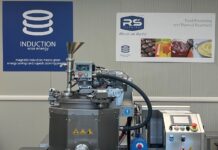Last but not least, the problem of hygienic quality which represents the feature with the highest socio-economic impact on the community. It is closely connected to product safety and, consequently, the absence of risk for customers’ health. In this sense, it is important to focus on the quality and freshness of raw materials, hygiene equipment and environments, as well as storage methods, packaging and storage of finished products. Depending on the size of the confectionery industry and investment opportunities of the individual production units, lines and equipment can be designed for manual, semi-automatic or fully automatic management. In the latter case, computerized monitoring allows continuous control of what is happening in production. For washing and cleaning equipment, among the most innovative systems, there are certainly those based on a food silicone ball which, driven by compressed air appropriately placed in the pipe through a dedicated unit, vacuums and cleans the whole line. The ball can be equipped with an internal chip to monitor the position in which it is located. The system can be particularly valuable in cases where different products are used in the same pipe.
Overview on technology
 Filled products require a careful dosing of filling cream. And speaking of precision, the most efficient dispensers in this sense are the volumetric (or piston) ones, perfect for dosing creams, jams, marmalade, liquids. In addition to filled products, one should also remember the cream-based products, which are usually called soft serve desserts. There is a wide range of filling creams: with chocolate, vanilla, eggnog, lemon, and cream. These creams are also used as fillings for cakes and snacks. The ingredients – namely: water, sugar, glucose, fats, milk, cocoa, fruit purees, emulsifiers, stabilizers – are either measured through liter-counter or weighed, and introduced in batches into a mixture preparation dissolver. The mixture is then transferred with centrifugal pump into the storage tank from which, by means of volumetric pump, it goes into heat exchangers for pasteurization and subsequent cooling. In some plants when entering the cooling exchanger, nitrogen or filtered air can be injected into the cream. The cream can be spread directly on the product coming out of the oven or introduced into special tanks for delivery to end users. In any case, in preparing the recipes, different levels of automation and thermal cycle parameters can be provided as well as the ability to sterilize. For example, for the post-oven filling of croissants, both vertical and horizontal injecting machines are used. The former have outputs fed by a single vertical cylinder which enables greater injection precision. As for the latter, the current state of the art allows max production speed accounting by 25 cycles per minute. Plants for cake preparation and filling are made up of more stages to inject fillings, or to dose decorative cream spikes. The production processes for creams and soft serve desserts are characterized by an ingredient dosing system (either through liter-counter or weighed and added by hand); once ready, the mixture is heated and then transferred into a storage tank. It subsequently passes, through a pump, into a series of heat exchangers for sterilization and cooling. Once the product proves to be sterile and cooled, it comes to packaging. As already mentioned, there are no totally standardized facilities. Depending on particular needs, they can be sized in terms of production capacity, either by adding or eliminating special technological details. Finally, one should remember that even in this sector, energy conservation and efficiency in production lines are constantly pursued goals.
Filled products require a careful dosing of filling cream. And speaking of precision, the most efficient dispensers in this sense are the volumetric (or piston) ones, perfect for dosing creams, jams, marmalade, liquids. In addition to filled products, one should also remember the cream-based products, which are usually called soft serve desserts. There is a wide range of filling creams: with chocolate, vanilla, eggnog, lemon, and cream. These creams are also used as fillings for cakes and snacks. The ingredients – namely: water, sugar, glucose, fats, milk, cocoa, fruit purees, emulsifiers, stabilizers – are either measured through liter-counter or weighed, and introduced in batches into a mixture preparation dissolver. The mixture is then transferred with centrifugal pump into the storage tank from which, by means of volumetric pump, it goes into heat exchangers for pasteurization and subsequent cooling. In some plants when entering the cooling exchanger, nitrogen or filtered air can be injected into the cream. The cream can be spread directly on the product coming out of the oven or introduced into special tanks for delivery to end users. In any case, in preparing the recipes, different levels of automation and thermal cycle parameters can be provided as well as the ability to sterilize. For example, for the post-oven filling of croissants, both vertical and horizontal injecting machines are used. The former have outputs fed by a single vertical cylinder which enables greater injection precision. As for the latter, the current state of the art allows max production speed accounting by 25 cycles per minute. Plants for cake preparation and filling are made up of more stages to inject fillings, or to dose decorative cream spikes. The production processes for creams and soft serve desserts are characterized by an ingredient dosing system (either through liter-counter or weighed and added by hand); once ready, the mixture is heated and then transferred into a storage tank. It subsequently passes, through a pump, into a series of heat exchangers for sterilization and cooling. Once the product proves to be sterile and cooled, it comes to packaging. As already mentioned, there are no totally standardized facilities. Depending on particular needs, they can be sized in terms of production capacity, either by adding or eliminating special technological details. Finally, one should remember that even in this sector, energy conservation and efficiency in production lines are constantly pursued goals.




